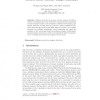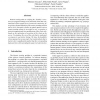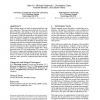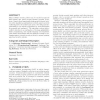252 search results - page 10 / 51 » Protecting Software Code by Guards |
100
click to vote
ISW
2005
Springer
15 years 5 months ago
2005
Springer
Software protection is an area of active research in which a variety of techniques have been developed to address the issue. Examples of such techniques include code obfuscation, s...
SCAM
2007
IEEE
15 years 6 months ago
2007
IEEE
Remote trusting aims at verifying the “healthy” execution of a program running on an untrusted client that communicates with a trusted server via network connection. After giv...
95
Voted
WORM
2003
15 years 1 months ago
2003
This paper presents DOME, a host-based technique for detecting several general classes of malicious code in software executables. DOME uses static analysis to identify the locatio...
108
click to vote
EUROSYS
2006
ACM
15 years 8 months ago
2006
ACM
Many software attacks are based on injecting malicious code into a target host. This paper demonstrates the use of a wellknown technique, data tainting, to track data received fro...
AOSD
2010
ACM
15 years 6 months ago
2010
ACM
Many software security policies can be encoded as aspects that identify and guard security-relevant program operations. Bugs in these aspectually-implemented security policies oft...




